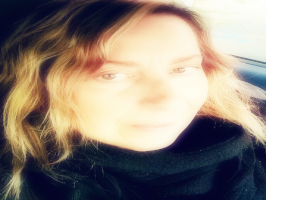Check up:
Children and teenagers fix their knowledge through a plurality of languages (verbal, iconic, creative, technological, etc.), which is learned in their grammars and experimented in their lab activities.

The school of the curriculum is the school of the laboratory, of working groups, of cooperative learning. The organizational solutions, which will be variuos in different places and in different contexts and must be inspired by these simple but needful pedagogical quality criteria.
A time to live, a time to play and a time to study. The dimension of time represents
a decisive variable for learning, both to evidence different approach studying methods of children, and to offer the most inputs and cultural opportunities. School time is integrated, long and protective in the early years (kindergarten and early elementary school years) to promote the unity of the educational day, becoming more and more flexible later, in relation to the various opportunities offered for the extra school, too.
The enrichment of educational offer could be accompanied by a "strong" and "visible" proposal
of training experiences for Italian children:
1 - a musical education course (an instrument as a gift to each student who enters primary
school);
2 - a pre-sport course for each student (in coop with clubs and federations);
3- an active use of digital technology (a tablet or note book, for each pupil who enters the sixth grade);
4 - a language certification and a trip abroad (during the high school);
5- a long term internship in a company, a service, a research center (at 18 ).
On such an ambitious but "tangible" program it is possible to ask for cooperation of families,
local and private entities.
Target:
a) Give to each pupil, who enters first grade, a musical instrument (with a free music course ). The activities can be carried out inside or outside the school.
b) Assure each student - during adolescence - annual registration for a sport activity;
c) Give a notebook to every student who enters secondary school;
d) Give the students the opportunity, during high school, to travel abroad for 15 days for each student to better languages knowledge;
e) To ensure to students leaving high school, to attend an internship or experience
of work related learning.
Money:
The various initiatives should see a triple participation:
a) the State with dedicated funds
b) the territory (local authorities, foundations, associations etc.)
c) parents (in relation to family income).
- About point a) the operation refers to 500,000 students and could be a figure of
100 million per year, for 1 billion over the decade;
- About point b) the operation refers to 500,000 students and the State could be a figure of
100 million per year, for 1 billion over the decade;
- About point c) the operation refers to 500,000 students and could be a figure of
100 million per year, for 1 billion over the decade;
- About point d) the operation refers to 500,000 students and could be a figure of
400 million per year, for 4 billion over the decade;
- About point e) the operation refers to 500,000 students and could be paid by the State for a figure of100 million per year, for 1 billion over the decade.
Sono Laura Di Masi, Napoletana ma casertana di adozione I miei studi: Liceo classico. Laurea in lingueDiploma post laureamTraduttore /interprete.Non nasco come docente, infatti per un decennio sono stata la responsabile ufficio estero di una importante azienda di import/export, divento insegnante per vocazione. La scuola e' la mia passione. Vincitrice di concorso a cattedra con max votazione mi abilito x insegnare inglese alla secondaria di I e II grado.Incomincio e continuo tuttora con entusiasmo.Funzione strumentale Area scuola e territorio e Ptof Membro consiglio d'istitutoTutor Pon di lingua Docente ref. E-twinning. Funzione di docente specialista in metodologia Clil ( in Storia e Scienze).Adoro il mio lavoro, credo sia uno tra i piu' stimolanti e creativi ma di grande responsabilita'...alleviamo menti.Mi piace viaggiare, ascoltare musica e stare in mezzo alla gente.



